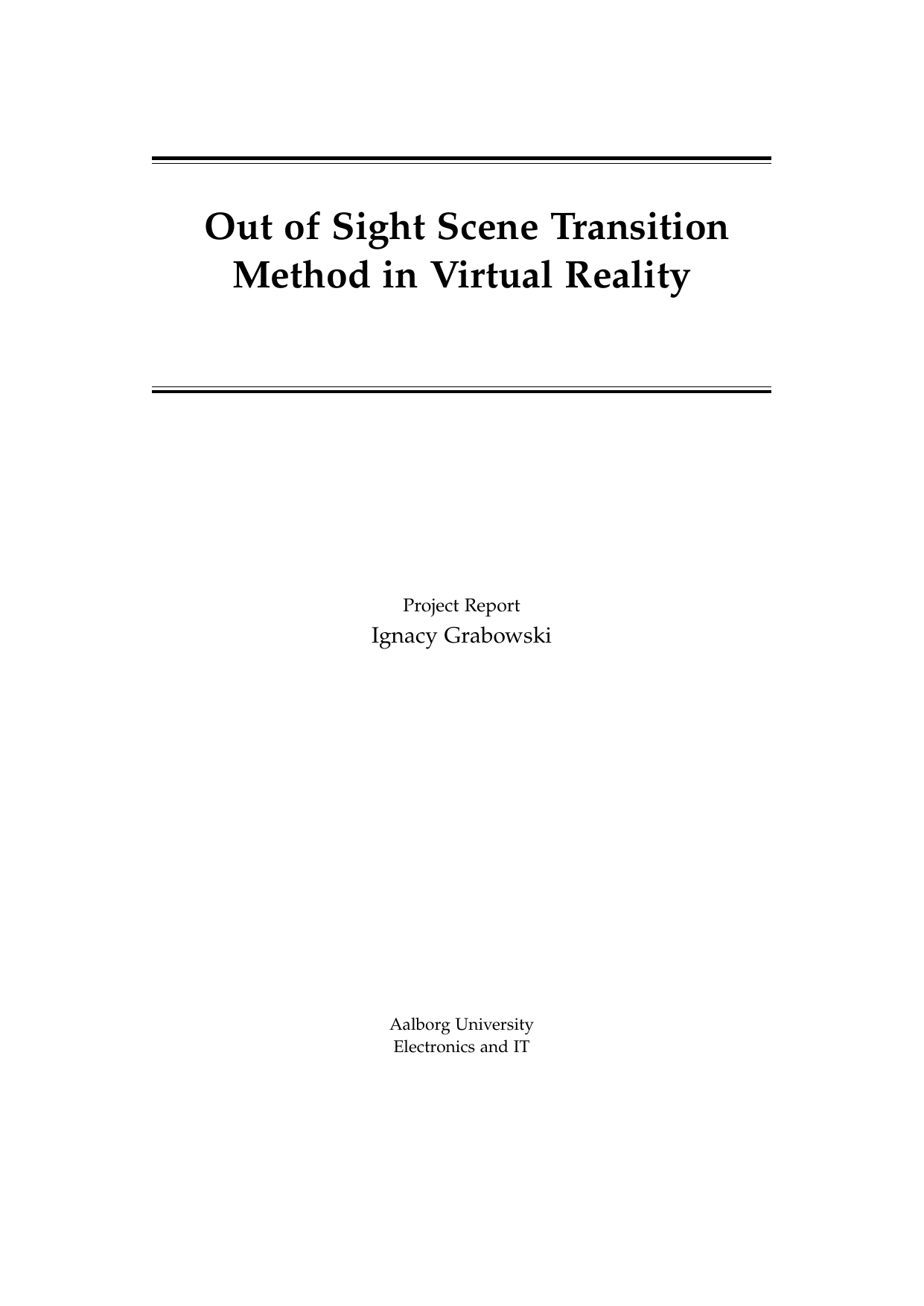
Out of Sight Scene Transition Method in Virtual Reality
Author
Term
4. term
Education
Publication year
2025
Submitted on
2025-05-26
Pages
58
Abstract
This thesis examines the viability of a novel visual transition technique in virtual reality (VR) designed for a physically constrained environment: the Out-of-Vision transition technique. Applied within an escape room-style VR game using natural walking loco- motion, the novel method is evaluated in comparison with an established technique of impossible spaces, imple- mented as a scene transition method. The method is evaluated in terms of users’ perceived sense of presence, continuity, as well as user preference. The study used a between-subjects and a within-subjects experimental design, using a structured Likert-scale ques- tionnaire. Results suggest that both techniques were usually effective in maintaining high levels of immersion and continu- ity. However, comparative evaluation revealed a consistent preference for the corridor-based method in terms of per- ceived sense of presence and continu- ity. While the user preference ratings did not show a statistically significant difference, the analysis of additional qualitative data exposed the strengths of the proposed Out-of-Sight transi- tion method in its potential to create seamless experiences, in contrast with a more grounded corridor-based tech- nique. Findings suggest that narra- tive context and user behavior play an important role in determining which technology is more effective in provid- ing a rich Virtual Reality experience.
Keywords
VR ; Games ; Game Design
Documents
